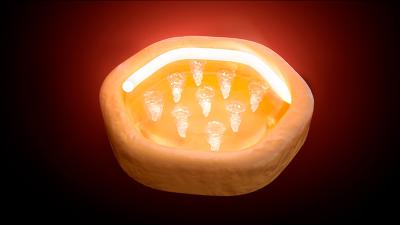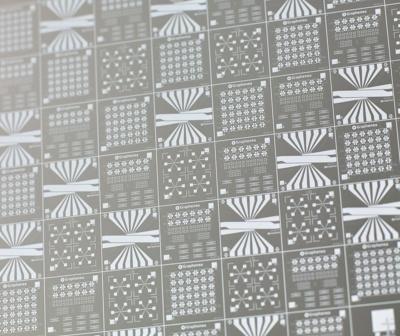The Graphene-Info weekly newsletter
Published: Tue, 10/26/21
The Graphene-Info newsletter (October 26, 2021)
Cannot read this? View it online here
General Graphene launched its new high-capacity CVD graphene roll-to-roll production line
US-based CVD graphene developer General Graphene Corporation (GGC) has launched its new Gen3.0 CVD graphene production line. This 20-meters long roll-to-roll based system can produce single- and multi-layer graphene materials on copper films up to 400 mm wide.

GGC says that with the new line, its manufacturing capacity exceeds 100,000 m2 /year. The company is now able to supply affordable and highly consistent CVD graphene in industrial volumes.
Princeton team gains better understanding of superconductivity in 'magic angle' graphene
Princeton researchers have dissipated some of the mystery around 'magic angle' graphene's superconductivity by showing an uncanny resemblance between it and the superconductivity of high temperature superconductors. Magic graphene may hold the key to unlocking new mechanisms of superconductivity, including high temperature superconductivity.
Ali Yazdani, Professor of Physics and Director of the Center for Complex Materials at Princeton University, led the research. He and his team have studied many different types of superconductors over the years and have recently turned their attention to magic bilayer graphene. “Some have argued that magic bilayer graphene is actually an ordinary superconductor disguised in an extraordinary material,” said Yazdani, “but when we examined it microscopically it has many of the characteristics of high temperature cuprate superconductors. It is a déjà vu moment.”
Metalgrass offers a discounted yearly market reports package
Metalgrass (Graphene-Info) is now offering a new subscription service for enterprises that want access to our complete collection of market reports.

For $3,500 per year, you will get an Enterprise License to all of our market reports. Metalgrass currently offers 12 market reports, plus 4 handbook guides, and all of these are included in the subscription (bought separately, these will cost over $10,000!). You will also have access to all new reports, updates and guides released in the future (during the yearly subscription period).
Our Enterprise License gives access to your entire organization: you can share the report with all the company employees via mail, shared server or any other digital way.
Purdue team develops “topological circulators” based on a new phase of graphene
Purdue researchers have developed a “topological circulator” that may improve how information is routed and processed on a chip, using a new phase of graphene.

The team has shown that graphene’s viscous fluid supports unidirectional electromagnetic waves on the edge. These “edge waves” are linked to a new topological phase of matter and symbolize a phase transition in the material, not unlike the transition from solid to liquid. A remarkable feature of this new phase of graphene is that light travels in one direction along the edge of the material and is robust to disorder, imperfections and deformation. Purdue researchers have harnessed this nonreciprocal effect to develop “topological circulators” – one-way routers of signals, the smallest in the world – that could be a breakthrough for on-chip, all-optical processing.
Graphenea certified for medical device components
This is a sponsored post by Graphenea
Graphenea has obtained ISO 13485 certification for manufacturing medical device components. The certification relates to the GFET product line and the Graphene Foundry service.

The ISO standard is an important certification needed for the commercialization of medical applications of graphene, in particular non-implantable biosensors. Graphenea obtained certification for the entire process chain, including raw materials, design, development, manufacture and sale. The certificate also applies to facilities, quality management, tracing, and data analysis. The ISO certificate was issued after an independent audit by SGS.
GMG And BOSCH sign collaboration agreement for graphene aluminium-ion battery manufacturing plant
Graphene Manufacturing Group (GMG) has announced that it has signed a non-binding Letter of Intent, with the aim to agree on the terms of binding agreements, with Robert Bosch Australia ("BOSCH"). The idea is for BOSCH to design and deliver a Graphene Aluminium Ion Battery ("G+AI Battery") manufacturing plant.
Robert Bosch Australia is a subsidiary of the BOSCH Group, a global provider of integrated production line solutions, automation, robotics and testing equipment. BOSCH will support GMG in learning and developing the automation of the battery assembly process and use the results from the GMG G+AI Battery pilot plant to support the scaling of these into fully automated plants. The parties' intent is for BOSCH to become GMG's engineering, design and construction contractor for GMG's near and long-term battery cell manufacturing facility needs (both coin cell and pouch pack).
IIT-G team develops a cost-effective alternative for splitting water molecules to harness hydrogen
Researchers at the Indian Institute of Technology Guwahati (IIT-G) have developed a cost-effective alternative to the Photo-Electro-Chemical (PEC) cells that split water molecules to harness hydrogen. The team is developing novel materials that can use sunlight to split water into hydrogen and oxygen. The materials are much cheaper than the currently used 'noble metals', leading to cost-effective solar-powered hydrogen generators. The team aims to pave the way to a carbon-free hydrogen economy.
The team of IIT Guwahati scientists has developed non-noble metal catalysts that are as good as the expensive metals in splitting water into PEC cells. "We have developed a ternary catalyst that comprises cobalt-tin layered-double hydroxides (LDH) and bismuth vanadate, which forms a p-n junction semiconductor with graphene bridges, and have shown that the catalyst, when used as a photoanode, is able to split water easily to produce hydrogen and oxygen," said lead researcher Dr Mohammad Qureshi, Professor, Department of Chemistry, IIT Guwahati.







